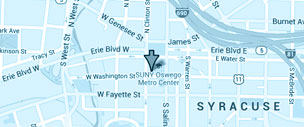Cerebral palsy is a condition that is managed, not cured. The financial impact can last a lifetime.
It's hard to keep a dry eye when reading a story published in TIME about two brothers who walked 40 miles together in just 30 hours. It wasn't the actual mileage or the hours that makes this story so inspirational for individuals across the nation. It was something much more.
On that weekend in June 2014, only one of the brothers moved his feet across the ground. Why? The 7-year-old boy in the sibling duo was unable to walk on his own due to the cerebellar degenerative disorder known as cerebral palsy. It was his 14-year-old brother who carried him the entire distance.
Walking on this journey with 50 pounds on his back was not just a feat of athleticism; it was a way for the older brother to raise awareness for the condition. Specifically, he saw a "need for innovative ideas in mobility aids and medical procedures."
Although the teenager was exhausted by the time it was over, he acknowledged that "it's nowhere near how hard" his younger brother works on a daily basis. What exactly does that life look like for those who have been diagnosed with cerebral palsy?
Treatment Plans Manage The Physical Impairment
Cerebral palsy is actually a term that describes a combination of impairments that affect an individual's motor function. The condition is caused by either abnormal brain development or brain damage that is suffered prior to, during or even shortly after the birth of a child.
There is currently no way to repair the damage to the soft brain tissue. Instead, treatment plans focus on managing the physical impairments that can also lead to secondary conditions. These treatment plans often center on different methods of therapy and adaptive equipment. In some cases, corrective surgeries may also be necessary.
What Is The Financial Impact Of These Treatment Plans?
There is not a single preferred treatment plan or one that can be used from case to case. Each child's impairments are unique, and each plan must be tailored to the individual. Although the cost differs from one family to the next, the Centers for Disease Control and Prevention estimated that it cost on average an additional $921,000 to care for a child born in the year 2000 and diagnosed with cerebral palsy.
That estimate is not all-inclusive, covering only a portion of the costs incurred by families. The estimate includes the average direct medical costs, such as physician visits and therapies; indirect medical costs, like productivity loss due to the inability to work; as well as direct nonmedical costs such as special education. The number did not include emergency or out-of-pocket expenditures.
This estimate also failed to include a value for the psychosocial effects suffered by the child or the expenses incurred by a family member who gives up his or her time and career opportunities to help care for the child.
The number above was based on the value of the dollar in 2003. There is no doubt that estimates today would likely be much higher, and it is a financial burden that most families are not prepared to shoulder.
Parents of children who have suffered a birth injury due to the negligence of a physician or a hospital should consult with a Syracuse medical malpractice attorney. Compensation obtained through a birth injury lawsuit can help families avoid financial problems now and into the future, so that they can focus on providing the care that their child needs.
Keywords: cerebral palsy, birth injury, medical malpractice, brain injury



